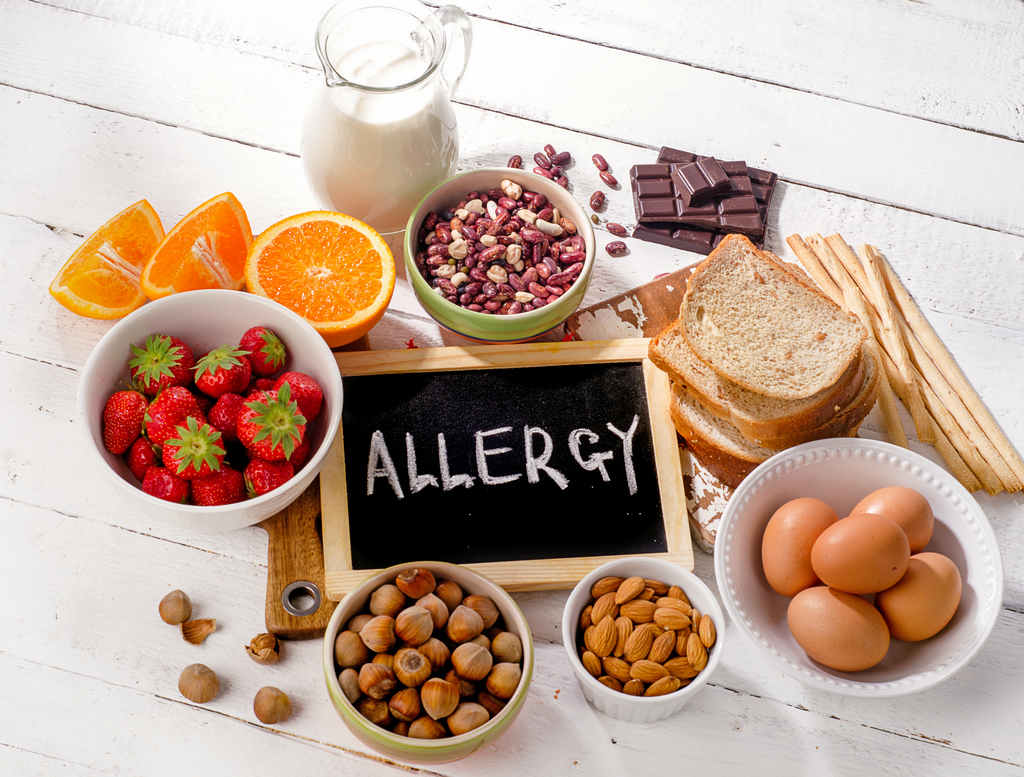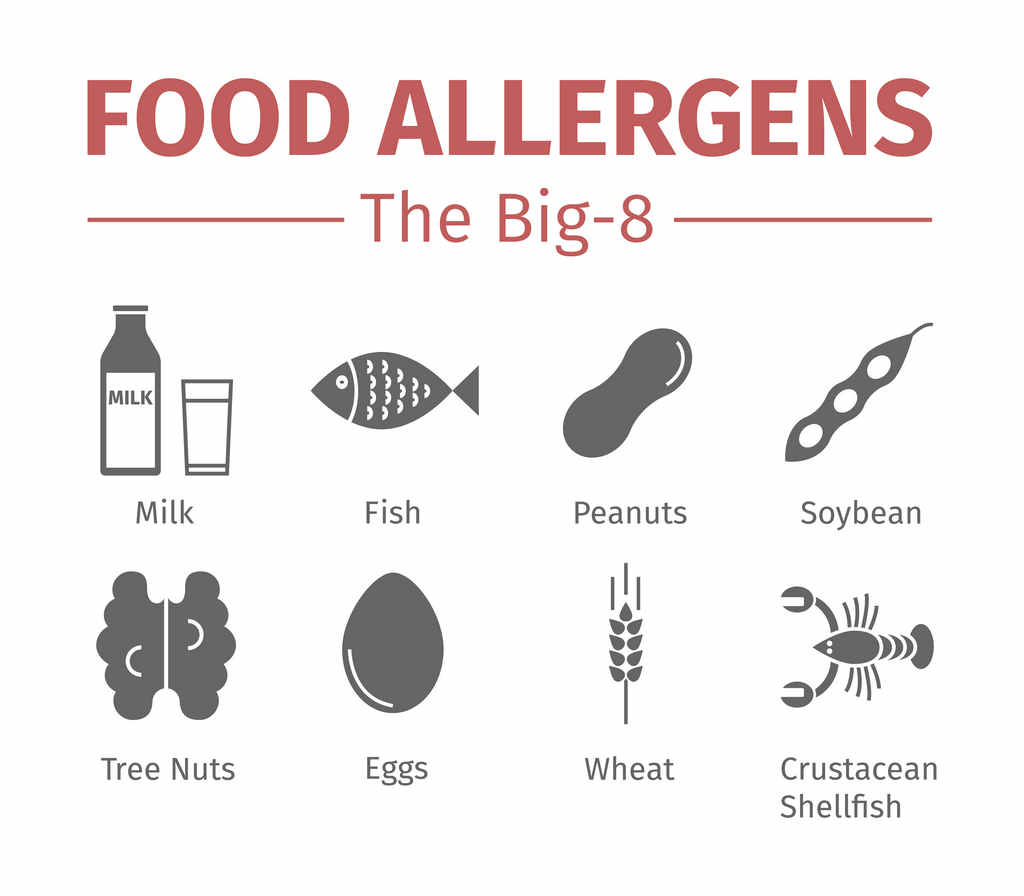For parents of a child with food allergies, the holidays can be a stressful time of year. Many holiday foods contain at least one of the top eight allergens (milk, eggs, wheat, soy, fish, shellfish, tree nuts, and peanuts); making it difficult to enjoy food.
So, it important to parents follow a few simple food allergy precautions and procedures for children with food allergies to safely enjoy the holidays.



Food Allergy Statistics
According to Food Allergy Research and Education (FARE), about 32 million people in the U.S. have food allergies (and 5.6 million of those are children under age 18).
- Learn about proper hygiene, cross contamination, cold and hot food safety, foodborne pathogens, and best practices to prevent foodborne illness.
- Food Manager Training & ANSI Certification - $99.00
- Food Handler Training - only $7.00!
- HACCP Training: 16hr/4hr/1hr
- Food Allergy Training - $15.00
- Enter Promo "train10off" at Checkout
Likewise, the Centers for Disease Control & Prevention (CDC) reports that the prevalence of food allergy in children increased by 50 percent between 1997 and 2011. And between 1997 and 2008, the prevalence of peanut or tree nut allergy appears to have more than tripled in U.S. children.



What is a Food Allergy?
- A food allergy is a medical condition in which exposure to a food triggers a harmful immune response. The immune response, called an allergic reaction, occurs because the immune system attacks proteins in the food that are normally harmless. The proteins that trigger the reaction are called allergens.
- The symptoms of an allergic reaction to food can range from mild (itchy mouth, a few hives) to severe (throat tightening, difficulty breathing).
- Anaphylaxis is a serious allergic reaction that is sudden in onset and can cause death.



What are the Major Food Allergens?
While more than 160 foods can cause allergic reactions in people with food allergies, the law identifies the eight most common allergenic foods. These foods account for 90 percent of food allergic reactions, and are the food sources from which many other ingredients are derived.
The eight foods identified by the law as food allergens are:
- Milk
- Eggs
- Fish (e.g., bass, flounder, cod)
- Crustacean shellfish (e.g., crab, lobster, shrimp)
- Tree nuts (e.g., almonds, walnuts, pecans)
- Peanuts
- Wheat
- Soybeans
These eight foods, and any ingredient that contains protein derived from one or more of them, are designated as “major food allergens” by the Food Allergen Labeling and Consumer Protection Act (FALCPA).



FDA’s Role: Labeling
To help Americans avoid the health risks posed by food allergens, FDA enforces the Food Allergen Labeling and Consumer Protection Act of 2004 (the Act). The Act applies to the labeling of foods regulated by FDA which includes all foods except poultry, most meats, certain egg products, and most alcoholic beverages which are regulated by other Federal agencies. The Act requires that food labels must clearly identify the food source names of any ingredients that are one of the major food allergens or contain any protein derived from a major food allergen.As a result, food labels help allergic consumers identify offending foods or ingredients so they can more easily avoid them.
Video: Food Allergies – Reducing the Risks
Know the Symptoms
Symptoms of food allergies typically appear from within a few minutes to 2 hours after a person has eaten the food to which he or she is allergic. Allergic reactions can include:
- Hives
- Flushed skin or rash
- Tingling or itchy sensation in the mouth
- Face, tongue, or lip swelling
- Vomiting and/or diarrhea
- Abdominal cramps
- Coughing or wheezing
- Dizziness and/or lightheadedness
- Swelling of the throat and vocal cords
- Difficulty breathing
- Loss of consciousness



More Severe Food Allergy Symptoms
Initially mild symptoms that occur after ingesting a food allergen are not always a measure of mild severity. Following ingestion of a food allergen(s), a person with food allergies can experience a severe, life-threatening allergic reaction called anaphylaxis. This can lead to:
- constricted airways in the lungs
- severe lowering of blood pressure and shock (“anaphylactic shock”)
- suffocation by swelling of the throat
Each year in the U.S., it is estimated that anaphylaxis to food results in:
- 30,000 emergency room visits
- 2,000 hospitalizations
- 150 deaths
Prompt administration of Epinephrine by autoinjector (e.g., Epi-pen) during early symptoms of anaphylaxis may help prevent these serious consequences.
What Is Epinephrine?
It treats severe or life-threatening allergic reactions known as anaphylaxis. Anaphylaxis can occur after exposure to allergens such as:
- Food (like milk, eggs, shellfish and peanuts)
- Insect stings
- Latex
- Medications
How to Use an Epinephrine Injector*
- Grip the epinephrine pen firmly and remove safety cap.
- Swing and push the pen into the middle of the outer thigh at a 90° angle.
- Keep the pen pressed firmly against the thigh for 10 seconds.
- Remove the pen and massage the injection area.
*Always follow the manufacturer’s instructions for the specific injector you are using.



Food Allergy – Federal & General Resources
- AAAAI/ACAAI Practice Parameters
- Centers for Disease Control and Prevention
- Department of Agriculture
- Food Allergy Educational Materials – WIC Works Resource System
- Food Allergies and Intolerances – Nutrition.gov
- Department of Health and Human Services
- Food Allergies – Healthfinder
- European Academy of Allergy and Clinical Immunology: International Consensus (ICON) Papers
- FDA – Food Allergens
- FDA – Food Allergen Labeling & Consumer Protection Act – FAQs
- National Institutes of Health (NIH)
- Food Allergy – National Institute of Allergy and Infectious Diseases (NIAID)
- Addendum Guidelines for the Prevention of Peanut Allergy (2017)
- National Institute for Allergy & Infectious Diseases: Guidelines for the Diagnosis and Management of Food Allergy in the United States: Summary for Patients, Families and Caregivers (May 2011)
- National Institute of Allergy and Infectious Diseases, National Institutes of Health: Food Allergy
- National Library of Medicine
- Food Allergy – Medical Encyclopedia
- Food Allergy – MEDLINEplus





